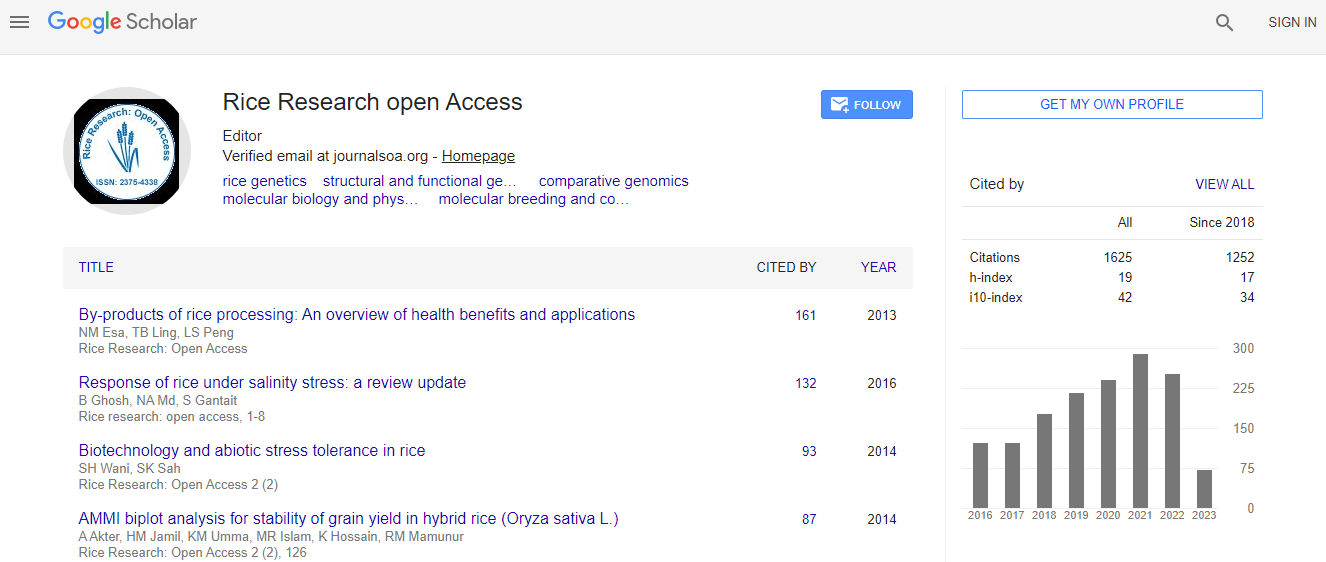Research Article
Genotype × Environment Interaction and Stability Estimate for Grain Yield of Upland Rice Genotypes in Nigeria
Maji AT1, Bashir M2, Odoba A1, Gbanguba AU1 and Audu SD1*
1National Cereals Research Institute Badeggi, Niger state. Nigeria
2National Biotechnology Development Agency, Lugbe, Abuja, Nigeria
- Corresponding Author:
- Audu SD
National Cereals Research Institute Badeggi
Niger state, Nigeria
E-mail: Saudatu28@gmail.com
Received December 23, 2014; Accepted February 26, 2015; Published February 28, 2015
Citation: Maji AT, Bashir M, Odoba A, Gbanguba AU, Audu SD (2015) Genotype × Environment Interaction and Stability Estimate for Grain Yield of Upland Rice Genotypes in Nigeria. J Rice Res 3:136. doi: 10.4172/2375-4338.1000136
Copyright: © 2015 Maji AT, et al. This is an open-access article distributed under the terms of the Creative Commons Attribution License, which permits unrestricted use, distribution, and reproduction in any medium, provided the original author and source are credited
Abstract
Genotype × environmental interaction and stability estimate were investigated on grain yield of 30 upland rice varieties at Sabon Daga, Amakama, Yandev and Uyo in 2003. The experiments were laid out in a randomised complete block design with three replications. AMMI Anova for grain yield revealed no significant different among genotypes (P<0.01), but there is significant difference on environments and the interaction. The significant different on the interaction indicates that, the genotypes respond differently across the different environments. The partitioning of GGE through GGE biplot analysis showed that principal component1 and principal component 2 accounted for 62.21% and 28.57% of GGE sum of squares respectively, explaining a total of 90.78% variation. AMMI 2 biplot revealed that, genotype ART16-9-3-15-3-B-1-1 (8) gave the highest mean yield of 2925 kg/ha with high main additive effect better than the check varieties. Hence, the genotype would be considered more adapted to wide environments than the rest of genotypes. Environments, such as Sabon Daga and Amakama could be regarded as a more stable site for high yielding rice varieties compare to the other locations.

 Spanish
Spanish  Chinese
Chinese  Russian
Russian  German
German  French
French  Japanese
Japanese  Portuguese
Portuguese  Hindi
Hindi 
